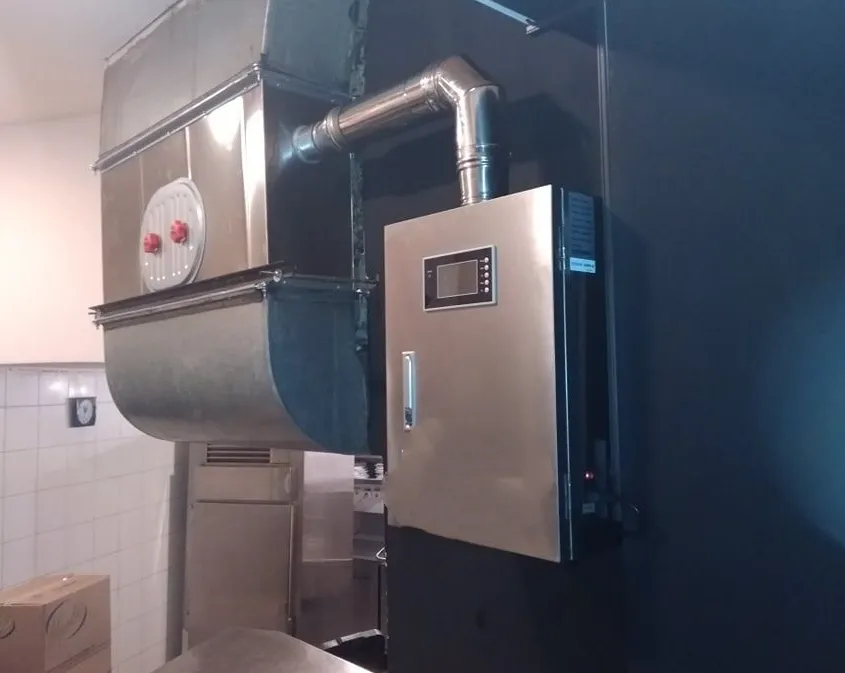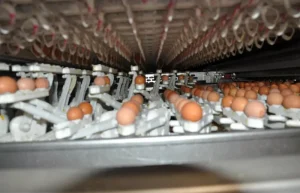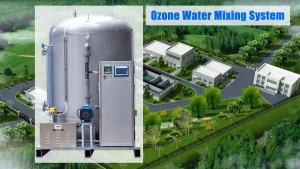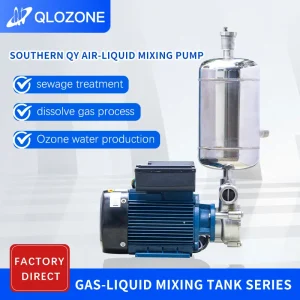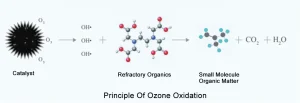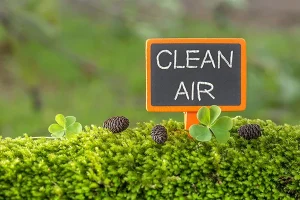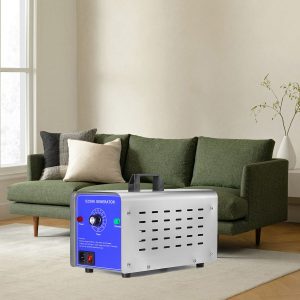Using ozone for greenhouses differs from using fungicides on plants in general. The general fungicide has a cumulative and progressive bactericidal effect, whereas ozone has a rapid bactericidal effect. Sterilization and disinfection can be completed instantly when the concentration reaches a certain threshold. Insects and microorganisms are killed by ozone’s powerful and rapid oxidizing ability. Moreover, ozone can kill bugs by oxidizing their respiratory and circulatory systems, which leads to them suffocating and dying when they breathe in ozone. Continue reading to learn more benefits of using an ozone generator for greenhouses.

Microorganisms such as fungi and bacteria are also eliminated by ozone. During infiltration of the cell membrane, it damages the membrane, reacting with various components within the cell, leading to irreversible changes that cause metabolic disorders and inhibit its growth to the point of cell death.
Fungicides based on ozone are broad-spectrum, high-performance, and fast-acting. It is capable of killing a variety of pathogens, viruses, microbes, as well as organic poisons and pesticides quickly and effectively. In vegetable grow room (where the ozone density is higher than the air density, the ozone generator usually can be placed 1.5-2 meters above the pedestrian channel), ozone is used as a raw material and high pressure is passed.
Ozone is produced in high concentrations by high frequency. It is possible to fill a greenhouse with sufficient concentrations of ozone in just 10 minutes, which can penetrate into the root systems of plants to kill pests and germs, thereby eliminating or reducing pesticide use in greenhouses.
The ozone technology provides effective method as compared to traditional solutions for producing green food by preventing and controlling pests and diseases. To ensure safety for personnel and ensure an adequate concentration of ozone after disinfection, ozone in the shed is performed at night, unmanned, fully enclosed and under high humidity conditions. Allow for adequate ventilation.

How Does the Ozone Generator Work?
Any compromised or “smelly” air usually has negatively charged cations. When the additional oxygen integrates with a cation, this leads to neutralization, which eliminates the odor. Once the extra molecule is removed and converted to oxygen, the air becomes purified. This process might take a few minutes to complete, so the treated air must pass through a closed chamber for the best results.
Oxygen is a biatomic molecule, whereas ozone is triatomic, and has three oxygen atoms. As a powerful disinfectant and powerful oxidation agent, oxygen ranks among the world’s most potent oxidation agents. Several experts believe that it has greater antibacterial power than chlorine bleach. Ozone is therefore a potent disinfectant. It has the ability to kill a large number of bacteria, viruses, molds, and germs. The additional oxygen in ozone makes it effective against pathogens.
Ozone for Greenhouse
An ozone disinfection of greenhouses has a bactericidal effect in relation to several factors, including the ozone generator’s own design, the amount of ozone in the air, the indoor temperature and humidity, light, fertilizer and water management, and the crop variety. In this way, ozone application can depend on vegetable type, growing period, pests and diseases. Climate characteristics and severity are adjusted accordingly. Studies have shown that the increase in humidity and the decrease in temperature can enhance the disinfection of ozone. High humidity thins the microbial cell membrane, which is easier to destroy by ozone, which is more effective at controlling microbial growth.
Ozone has a better sterilization effect at higher humidity, which is why ambient humidity should be above 60 percent when applying ozone.
Ozone can also effectively prevent tomato mildew, melons, and cucumber mildew in greenhouses, as well as remove mold, aphids, and aphids from eggplants, mushroom heads, potted plants, and more, and improve plant growth. Seeds should be soaked in ozone water to disinfect them.
In recent years, greenhouses have used ozone disinfection of vegetables to test and demonstrate how well ozone controls greenhouse pests and diseases, with favorable results.
Indoor Odor Control in Grow Room

By using ozone machine, growers most commonly apply ozone to the interior ventilation ducting. By doing so, you are providing an extra layer of protection to prevent any unwanted odors from escaping. For those who want to control odors, this is a good addition. In addition, this method is extremely safe, since it uses a proprietary extraction technique to extract ozone, thereby reducing the chances of buildup within the grow room.
The central section of the duct might benefit from an inline generator with medium output. In this instance, any odors in the pipe are mixed with ozone molecules.
Safety Measures
During operation and after the generator has been turned off, be sure to keep your pets away from the machine. Before you start the generator, make sure everything is ready. To keep it off after use, make sure the machine is connected to a timer. Ozone is safe as long as you do not breathe it in large quantities. If you are going to use protective gear, then it’s a good idea to have some with you so that you can monitor this process. Keeping the grow room close is also essential to maintaining good ozone quality.
Other Benefits of Ozone for Greenhouses
Ozone generator systems have a variety of advantages for greenhouses. These include:
1. Increased Absorption
Water, oxygen, and nutrients are more readily absorbed by plants with fertilized irrigation systems because they are being fed at the root zone.
2. Reduced Feeding
The water can be enriched with nutrients in micro-doses, and it requires fewer chemicals to remain balanced. As a result, less fertilizer is required and less water is required. When fewer additives are used in the system, fertilizer expenditures are reduced.
By using Ozone Purification, less irrigation water is required for crop irrigation. The amount of runoff, evaporation, and wastewater is minimal. Water costs are reduced substantially with the closed-loop system.
3. Reduced Risk of Disease
Bacterial problems and illnesses caused by water are extremely common. UV can only be used to sterilize or neutralize a very limited number of organisms that can inhibit plant growth. Water sterilization with ozone eliminates 99% of all bacteria and pathogens from irrigation systems and completely eliminates the threat of contamination.


